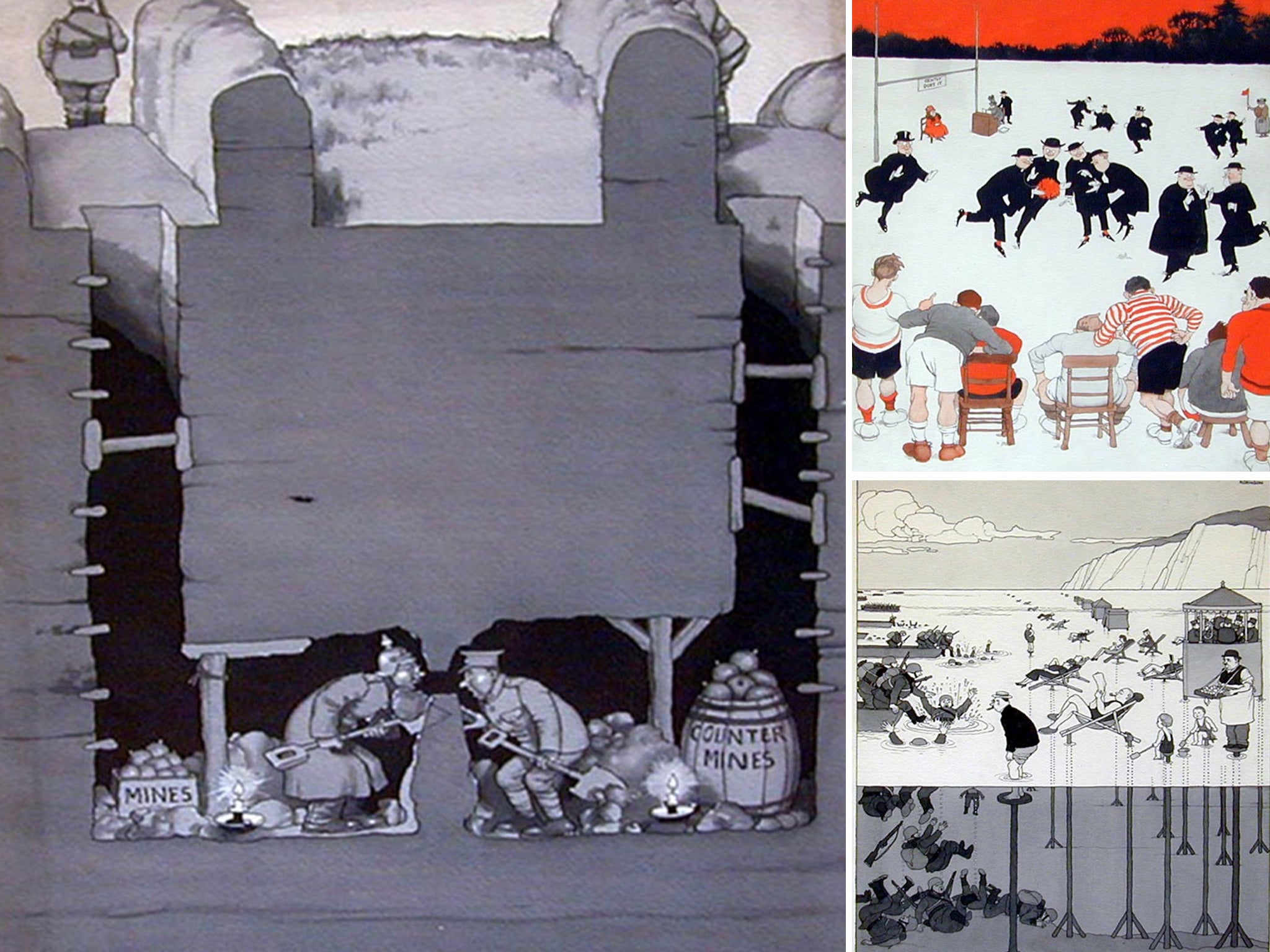Heath Robinson picture collection is saved for the nation
Many of Heath Robinson's best-known works are in the collection, which was put up for sale after the death of its owner

Your support helps us to tell the story
From reproductive rights to climate change to Big Tech, The Independent is on the ground when the story is developing. Whether it's investigating the financials of Elon Musk's pro-Trump PAC or producing our latest documentary, 'The A Word', which shines a light on the American women fighting for reproductive rights, we know how important it is to parse out the facts from the messaging.
At such a critical moment in US history, we need reporters on the ground. Your donation allows us to keep sending journalists to speak to both sides of the story.
The Independent is trusted by Americans across the entire political spectrum. And unlike many other quality news outlets, we choose not to lock Americans out of our reporting and analysis with paywalls. We believe quality journalism should be available to everyone, paid for by those who can afford it.
Your support makes all the difference.Hundreds of pictures by William Heath Robinson, the illustrator who became a byword for wackily eccentric yet ingenious devices, have been saved for the nation.
The cartoonist has been cited as an inspiration for the inventions featured in Wallace and Gromit and by Thomas Heatherwick who designed the 2012 Olympic cauldron.
The collection of 410 drawings and paintings were likely to be broken up, but £300,000 in grants from National Heritage Memorial Fund (NHMF) and £50,000 by the Art Fund will keep them together for public viewing.
Heath Robinson, described by His Dark Materials author Philip Pullman as a “great man”, won fame for his cartoon drawings of endearing, humorous inventions, especially those of machines, which he began producing in 1904.
As early as 1912, the term “Heath Robinson contraption” was recognised by dictionaries. His pictures were so well known and loved that during the Second World War the code-breaking machine that pre-dated Colossus was named Heath Robinson.
In the Falklands War, RAF mechanics lacked a chaff-dispensing mechanism for Sea Harriers, so developed one themselves using split pins and string, dubbing it the “Heath Robinson chaff modification”.
The picture collection was owned by Simon Heneage, the founder of the Cartoon Museum and a Heath Robinson family friend. He displayed them in a private gallery but died in 2011. They are being purchased by the William Heath Robinson Trust which will put them on display at its Heath Robinson Museum when it opens in north-west London next year.
Among them are pictures from both world wars, including Deceiving The Invader As To The State Of The Tide with a British beach scene arranged on tall stilts in the sea to trick the Germans into believing they are in the shallows.
Also included is a near-complete set of drawings from the 1941 book How To Build A New World reflecting aspirations for the post-war era, and pictures from the First World War series “The Saintly Hun”.
Carole Souter, chief executive of NHMF, said: “These fantastically wry cartoons represent British humour at its best. With the new museum opening in 2016 and the country marking the centenary of the First World War, there’s a renewed interest in Heath Robinson’s work and we felt that it was important to keep this collection together for the nation to rediscover and enjoy.”
Geoffrey Beare, of the William Heath Robinson Trust, said: “These works provide a perfect complement to the trust’s existing collection, which is particularly strong in illustration.
“It will permit us to mount a broader range of exhibitions in our new museum and maintain our programme of touring exhibitions.
“We are proud to become custodians of such an exciting collection of works by one of Britain’s best-loved artists.”
Join our commenting forum
Join thought-provoking conversations, follow other Independent readers and see their replies
Comments